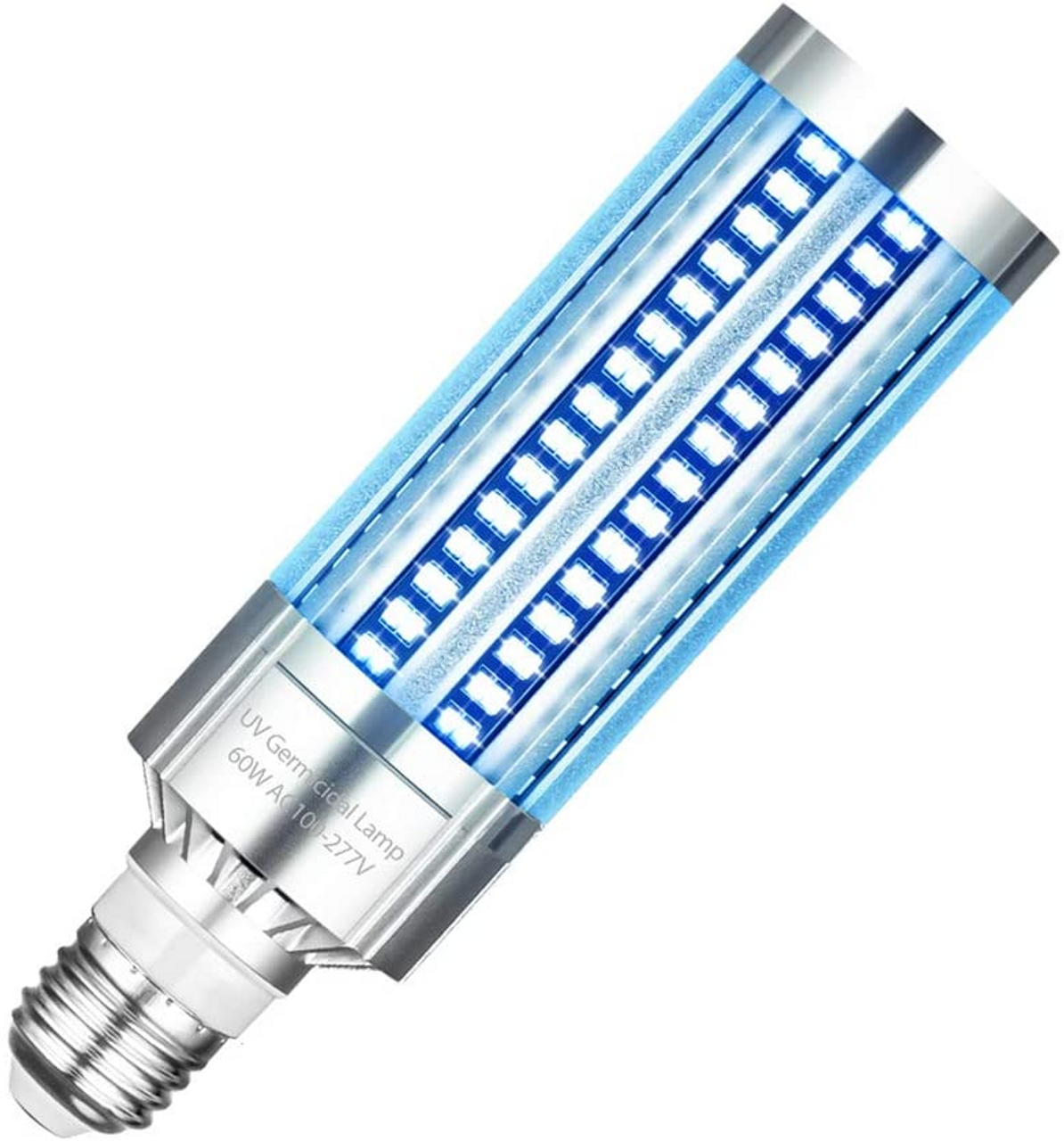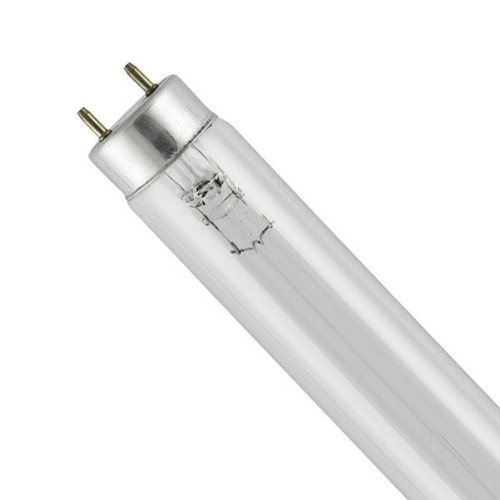
UVC Light Bulbs
What is the Difference between UVA UVB UVC? Which is Most Dangerous?
UVA, UVB, UVC- all of these are forms of ultraviolet light rays that are naturally occurring, but they are not created equal. We'll explain the differences between these three forms of radiation, and then discuss how UVC is harnessed in man-made lighting products to inactivate pathogens (kill germs).The sun is responsible for emitting each of the different types of ultraviolet light. UV rays are also found in man-made products, like tanning beds and welding torches. Although UV rays have some benefit, namely encouraging vitamin D production in humans, everyone should practice caution as each form of UV comes with its own risks.
UVC
UVC is the shortest wavelength of the three forms of UV. The shorter the wavelength, the more harmful the UV radiation. However, lucky for us, UVC isn't able to penetrate earth's atmosphere. So while UVC is the most dangerous because it's the shortest wavelength, it's not a risk to the typical person because the sun's natural UVC emissions don't penetrate skin. Remember, they actually do not even penetrate earth's atmosphere naturally at all. UVC is absorbed completely by the ozone layer.
This is not to say that UVC isn't dangerous. Although naturally occurring UVC doesn't permeate earth's atmosphere, inorganic sources of UVC radiation exist and are dangerous when not used properly. So, the people who need to be concerned about UVC radiation are those working with these man-made sources of UVC, like welding torches, mercury lamps, and, you guessed it, germicidal UV-C lighting, which we distribute. More on this after we define UVA and UVB.
Is UV light in general safe? Read one of our most popular blogs on the topic here.
UVB
UVB is the second shortest wavelength and the main culprit of sunburn. It's mostly absorbed by the ozone layer but still gets through (about 5% gets through overall). It harms the top layer (epidermis) of your skin in as little as 15 minutes of sun exposure. UVB rays are stronger or weaker depending on the time of day and season. There is a strong link between UVB rays and skin cancer. UVB rays do age skin over time.

UVA
UVA is the longest wavelength, penetrating the deepest and causing the vast majority (upwards of 95%) of UV radiation getting through earth's atmosphere. This is the form of radiation that causes skin aging, like spots and wrinkles, because it does reach so deeply into skin layers (through to the dermis layer). UVA rays can tan your skin right away, and do appear to be linked to cancer. UVA rays, unlike the others, penetrate glass and clouds, causing harm on overcast days or via your windshield.
Protect Yourself
You should protect yourself from UVA and UVB rays by applying broad spectrum sunscreen, wearing UPF clothing and sunglasses, and blocking UV rays with umbrellas and car shades as needed.
Most Dangerous?
So, which is the most dangerous type of UV radiation? There isn't a good answer to this question, although it's asked frequently. On the one hand, UVC is the most dangerous because it's the highest energy portion on the UV spectrum. However, UVC is completely absorbed by earth's atmosphere so it's really not a risk to most people. It's only a risk to those exposed to artificial sources of UVC (see more below).
If we choose the most dangerous based on exposure, then UVA is the clear forerunner for danger. It accounts for nearly all UV exposure as it's barely blocked by the earth's atmosphere. That said, it's also the shortest wavelength and isn't thought to cause as much long-term damage as UVB from the sun.
Although only a small amount of UVB penetrates earth, we'd consider it the most damaging to your average person (not those working incorrectly with artificial UVC sources) because it comes with the highest skin cancer risk.
Artificial UVC
All forms of UVC radiation are artificial since the sun's UVC doesn't get through earth's atmosphere, as discussed. Some common sources of man-made UVC radiation are:
- Older tanning beds
- Lasers
- Mercury lamps
- Welding torches
- Germicidal UV-C lighting
Not all artificial forms of UVC are equal in risk/reward. For instance, tanning beds are unnecessary and dangerous and should be avoided. Don't purposefully expose yourself to harmful radiation (note that most modern tanning beds use UVA radiation, which is still dangerous). Welding torches, conversely, are necessary for some jobs, and using the proper protective gear mitigates the risk of your UV exposure. Also, becoming a welder takes lots of training; they're prepared for this risk.
Germicidal UV-C lighting, when used properly, is operated in empty spaces using controls for safety. The reward of having killed up to 99.99% of pathogens from, say, personal protective equipment (PPE), outweighs the nearly non-existent risk of UV exposure.
Moreover, not all artificial UVC sources operate at the same wavelength. While UVC in general encompasses wavelengths of 100-280 nm, it varies from product to product where they are in that range. For example, one lamp that we distribute operates at 254 nm.
In conclusion, if you were to be exposed to artificial forms of UVC radiation, it would be detrimental (we talk about this in more detail here) but as long as equipment is used as directed, the benefits of UV-C technology outweigh the risks in most cases. It's like any technology- will the radiation from an x-ray machine harm you? Yes, but we have controls in place to ensure that the radiation from an x-ray machine can't harm you, and we won't stop using x-ray machines just because of this risk.
Germicidal UV-C Lighting
Why does a lighting company care about radiation? Stouch Lighting distributes UV-C light products that kill up to 99.99% of pathogens on surfaces and in the air. We wrote a whole post on safely using UV-C technology here. To summarize, it's vital that you receive proper training and only use these products as directed. Purchasing this equipment will also provide you with the instructions necessary.
Germicidal lighting (ex. UVGI light) can be an amazing tool to curve infection and virus rates in many applications. Read about all of them on our education page all about UV-C. Consider using this lighting....
- In hospital and other medical settings to curb HAI rates as well as COVID-19
- In gyms and fitness centers to keep STAPH infections at bay
- In school settings to protect teachers and students from the annual flu
- More ideas here...
The bottom line: use caution. UV rays of all kinds carry risks and benefits.








